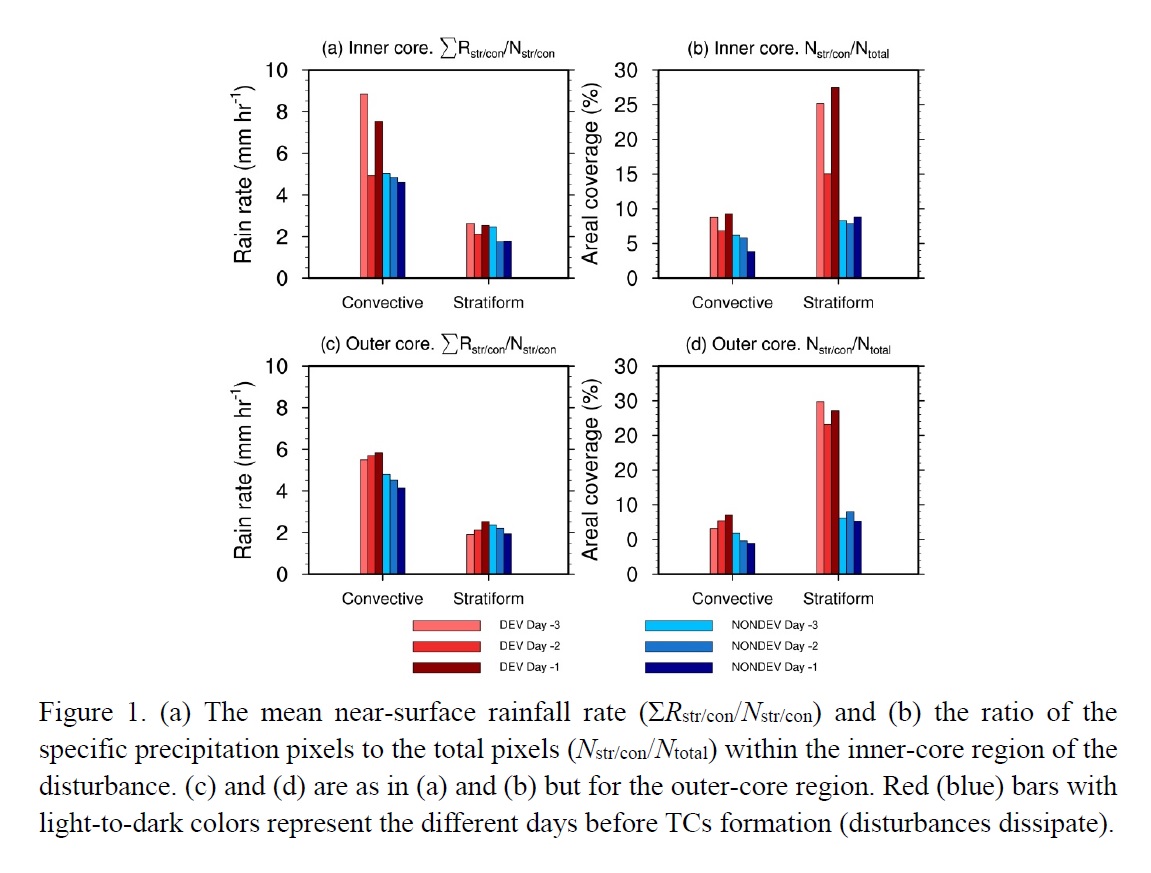Graphical Abstract
Wang, K., G. Chen, X. Bi, D. Shi, and K. Chen, 2020: Comparison of convective and
stratiform precipitation properties in developing and nondeveloping tropical disturbances observed by the Global Precipitation Measurement over the western North Pacific. J. Meteor. Soc. Japan, 98, 1051-1067.
Special Edition on Global Precipitation Measurement (GPM): 5th Anniversary,
https://doi.org/10.2151/jmsj.2020-056
Graphical Abstract with highlights
Plain Language Summary: A disturbance that develops into a tropical cyclone (TC) over the western North Pacific (WNP) needs to satisfy two essential preconditions in terms of precipitation characteristics from Global Precipitation Measurement (GPM). First, a large fraction of stratiform precipitation covers the region that is within 400 km from the disturbance center. Second, strong convective precipitation occurs within the inner-core (within 200 km of the disturbance center) region. In the TC formation process, the disturbances experience a remarkably more oscillatory process in the inner-core region than in the outer-core region.
Highlights:
- The disturbances over WNP are categorized into developing and nondeveloping groups to investigate the differences between satellite-retrieved convective and stratiform precipitation properties in both the inner- and outer-core regions.
- The disturbances prone to develop into a TC over the WNP satisfy the following two essential preconditions in terms of precipitation characteristics.
- TC formations evolving from parent disturbances can be regarded as an outcome of the joint contribution from the two distinct types of precipitation cloud.







